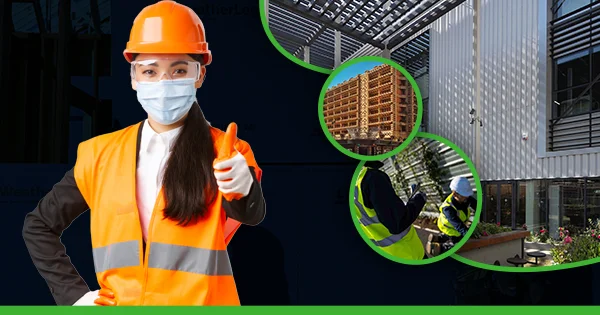Effective healthcare cleaning protocols are of utmost importance in maintaining patient safety and preventing the spread of infections in healthcare facilities. The cleanliness of these environments plays a crucial role in reducing the risk of healthcare-associated infections (HAIs) and ensuring the well-being of patients, staff, and visitors. In this article, we will explore the impact of effective healthcare cleaning protocols on patient safety and infection prevention.
The Role of Germs in Healthcare Settings
Healthcare settings are particularly susceptible to the spread of germs due to the high concentration of sick individuals and the presence of various pathogens. Understanding the risks and challenges associated with germs in healthcare facilities is essential in developing effective cleaning protocols. Common types of germs found in these environments include bacteria, viruses, fungi, and parasites. These pathogens can cause a range of infections, from mild to severe, and can be transmitted through direct contact, airborne particles, or contaminated surfaces.
Choosing the Right Disinfectants for Healthcare Facilities
Selecting the right disinfectants is crucial in effectively eliminating germs in healthcare facilities. It is important to choose cleaning agents that are proven to be effective against a wide range of pathogens, including drug-resistant bacteria and viruses. Factors to consider when choosing disinfectants include their efficacy, safety profile, compatibility with different surfaces, and ease of use. It is also important to follow manufacturer instructions for proper dilution and contact times to ensure optimal disinfection.
The Science of Cleaning
Understanding the mechanisms behind germ removal is essential in developing effective cleaning protocols. Cleaning agents work by physically removing dirt, debris, and microorganisms from surfaces through a combination of mechanical action, chemical action, and heat. Mechanical action involves physically scrubbing or wiping surfaces to dislodge and remove contaminants. Chemical action involves using cleaning agents that can break down or kill microorganisms. Heat can also be used to kill germs through processes such as steam cleaning or high-temperature washing.
Strategies for Maintaining Cleanliness in Healthcare Environments
Maintaining cleanliness in healthcare environments requires a comprehensive approach that includes designing a cleaning schedule, implementing effective cleaning techniques, and ensuring regular maintenance. A well-designed cleaning schedule should consider the specific needs of different areas within the facility, such as patient rooms, operating rooms, and common areas. It is important to establish clear guidelines for cleaning procedures, including the use of appropriate cleaning agents and equipment. Regular maintenance, such as replacing worn-out equipment and addressing repairs promptly, is also crucial in maintaining cleanliness.
The Importance of Proper Hand Hygiene
Proper hand hygiene is one of the most effective ways to prevent the spread of infections in healthcare settings. Healthcare workers should be educated on the importance of handwashing and provided with the necessary resources to practice good hand hygiene. Best practices for hand hygiene include washing hands with soap and water for at least 20 seconds, using alcohol-based hand sanitisers when soap and water are not available, and avoiding touching the face with unwashed hands. It is also important to promote a culture of hand hygiene within the healthcare facility by providing reminders, conducting regular audits, and recognising and rewarding compliance.
Hidden Areas in Healthcare Facilities that Require Attention
While surface cleaning is essential in maintaining cleanliness in healthcare facilities, there are often hidden areas that require attention as well. These areas are often overlooked but can harbour germs and contribute to the spread of infections. Examples of hidden areas include ventilation systems, light fixtures, behind furniture and equipment, and underneath sinks and countertops. Strategies for cleaning hard-to-reach areas include using specialised tools and equipment, such as long-handled brushes or extension wands, and incorporating these areas into regular cleaning schedules.
The Role of Technology in Healthcare Cleaning
Technology has played a significant role in improving healthcare cleaning techniques. Innovations and advancements in cleaning equipment have made it easier and more efficient to maintain cleanliness in healthcare environments. For example, the use of automated cleaning robots can help reduce the risk of human error and ensure consistent cleaning practices. UV-C light technology has also been used to disinfect surfaces and equipment, providing an additional layer of protection against germs. Healthcare facilities must stay current with the latest technological advancements in cleaning equipment. They should integrate these advancements into their cleaning protocols.
Training and Education for Healthcare Workers
Empowering healthcare workers with knowledge and skills for effective cleaning is essential in maintaining cleanliness in healthcare facilities. Training and education must encompass several critical topics. These include proper cleaning techniques, the correct use of cleaning agents and equipment, and infection prevention practices. Continual training and education hold significance. They keep healthcare workers informed about the latest practices and new developments in cleaning protocols. Moreover, offering resources and support to healthcare workers is vital. This will help address any questions or concerns they may have regarding cleaning procedures.
Monitoring and Auditing Systems for Continuous Improvement
Implementing monitoring and auditing systems is crucial in evaluating the effectiveness of cleaning protocols and identifying areas for improvement. These systems can help identify gaps in compliance, track cleaning performance, and provide feedback to healthcare workers. Regular audits should be conducted to ensure that cleaning protocols are being followed consistently and that any issues or deficiencies are addressed promptly. Compliance with cleaning protocols should be a priority, as it directly impacts patient safety and infection prevention.
Effective healthcare cleaning protocols are essential in maintaining patient safety and preventing the spread of infections in healthcare facilities. The role of germs in these environments is significant. It underscores the need for comprehensive cleaning strategies. These strategies should address both visible surfaces and hidden areas. Effective healthcare cleaning protocols encompass various elements. These include selecting appropriate disinfectants, comprehending the science of cleaning, among other things. Prioritising cleanliness and infection prevention is paramount for healthcare facilities. This ensures the well-being of patients, staff, and visitors.










